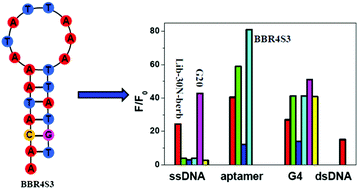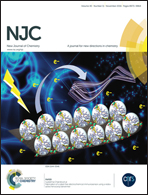Selection and analysis of DNA aptamers to berberine to develop a label-free light-up fluorescent probe†
Abstract
Aptamers are short single-stranded DNA or RNA, which can be selected from a random combinatorial library by the systematic evolution of ligands by exponential enrichment (SELEX) in vitro. In order to obtain novel selective light-up ligands for berberine, we selected DNA aptamers for berberine by a modified affinity chromatography-based SELEX. The ssDNA library was coupled on streptavidin-coated agarose beads through the hybridization with a biotin labeled complementary oligonucleotide capture strand, and the aptamer sequences were released from agarose beads through berberine binding. This method to isolate the aptamers was simple, straightforward and effective, and three aptamers with low micromolar dissociation constants (Kds) were achieved after only 6 rounds of selection. The best of them was further optimized, and the shortened aptamers showed similar Kds to the full length sequences. The light-up phenomenon of the berberine–aptamer pair was also investigated and the final minimized 21-mer aptamer which showed higher fluorescence enhancement than G-quadruplex structures could be used as a novel light-up fluorescent probe for various biosensing applications.


 Please wait while we load your content...
Please wait while we load your content...